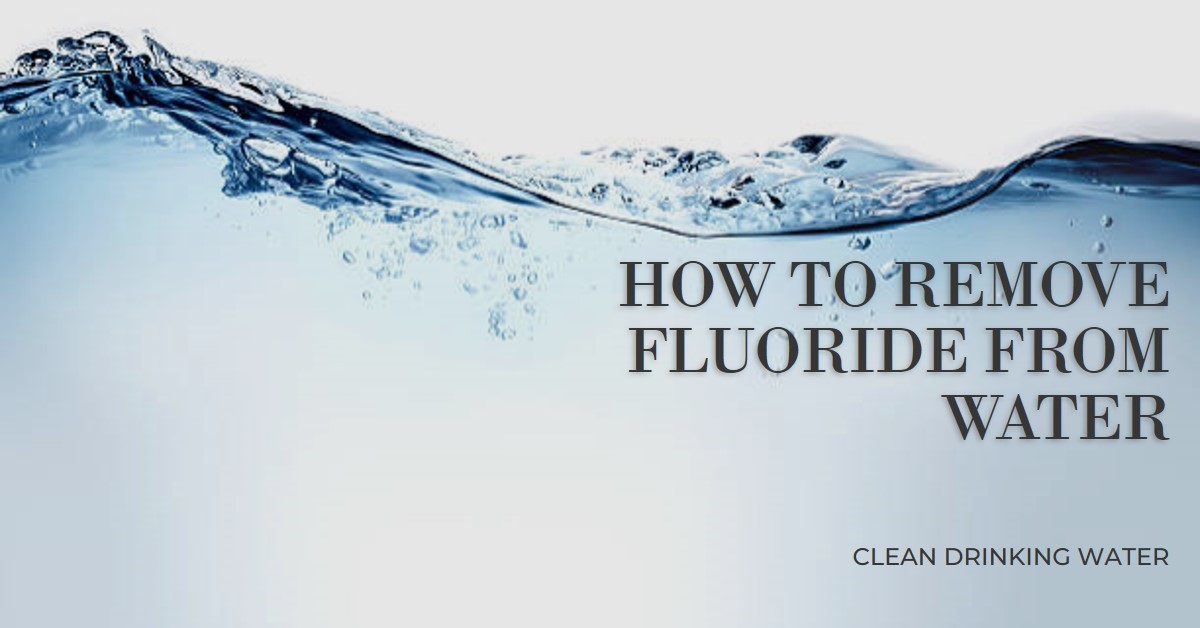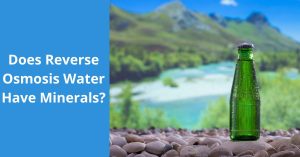Water is a vital resource for human life, and we rely on it for everything from hydration to cooking and cleaning. While many countries have added fluoride to public water supplies under the guise of dental health, many of us have concerns about excess fluoride exposure, its potential health effects and how to remove fluoride from water.
Fortunately, there are several methods available for removing fluoride from water, ranging from simple filtration to more complex treatment systems. In this article, we’ll explore the different methods for removing fluoride from water and help you choose the best option for your needs.
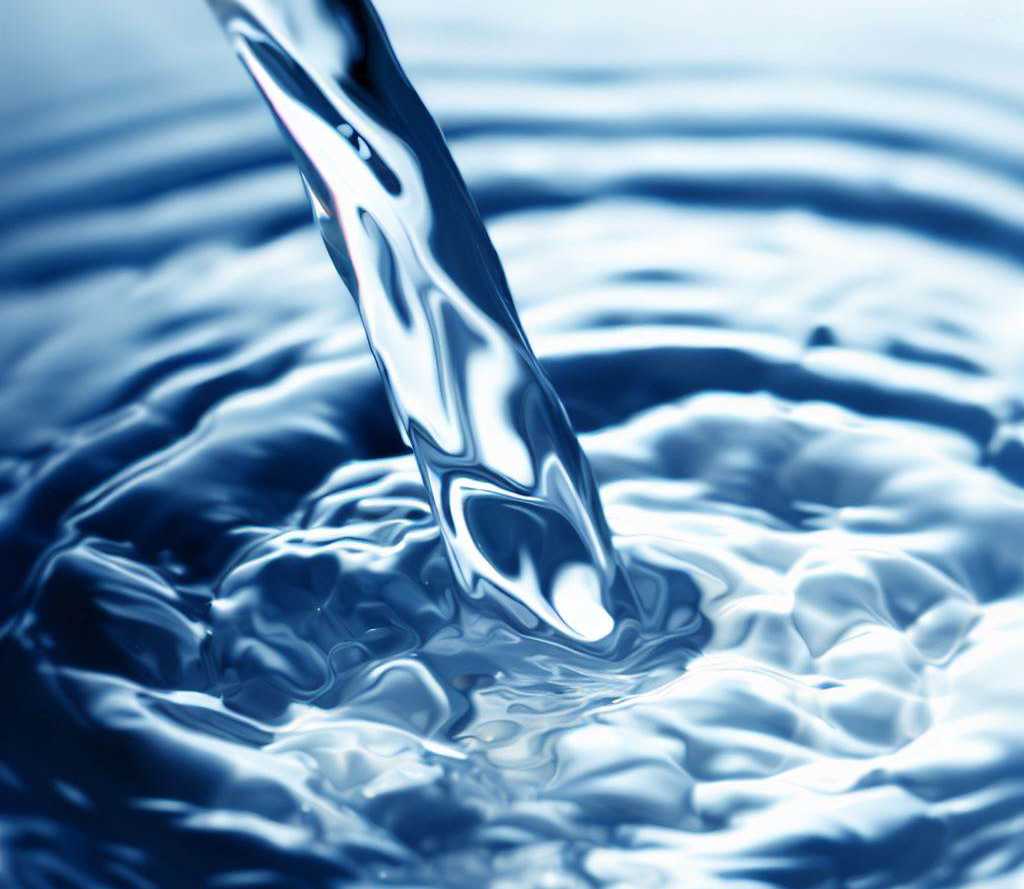
Methods to remove fluoride from your water
Here are some convenient fluoride water filter methods to easily and cost effectively remove fluoride from your water.
Water Distillation
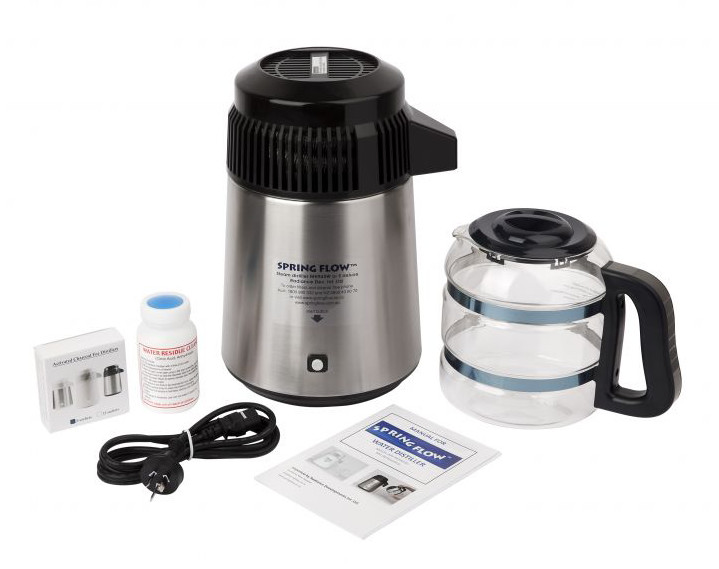
Distillation is a method of removing fluoride from drinking water that involves boiling water to create steam, which is then condensed to produce purified water. Using a water distiller is effective at removing fluoride as well as other contaminants, such as heavy metals, bacteria, and viruses, from water.
During the distillation process, water is heated to create steam, which leaves behind any impurities that do not vaporise at the boiling point of water. The steam is then collected and condensed back into liquid form, producing purified water that is free from fluoride and other contaminants.
One of the main advantages of distillation is that it can be done using simple equipment that is readily available in most households, such as a pot and a heat source. However, the process can be time-consuming and may require more energy compared to other methods of removing fluoride, such as activated alumina filters or reverse osmosis systems. Additionally, distillation can remove beneficial minerals from water, so it is important to ensure that these minerals are replenished through a balanced diet or supplements.
Despite its limitations, distillation remains a popular method for removing fluoride and other contaminants from drinking water, particularly in areas where fluoride levels are high or where other methods of water treatment are not available.
Reverse osmosis
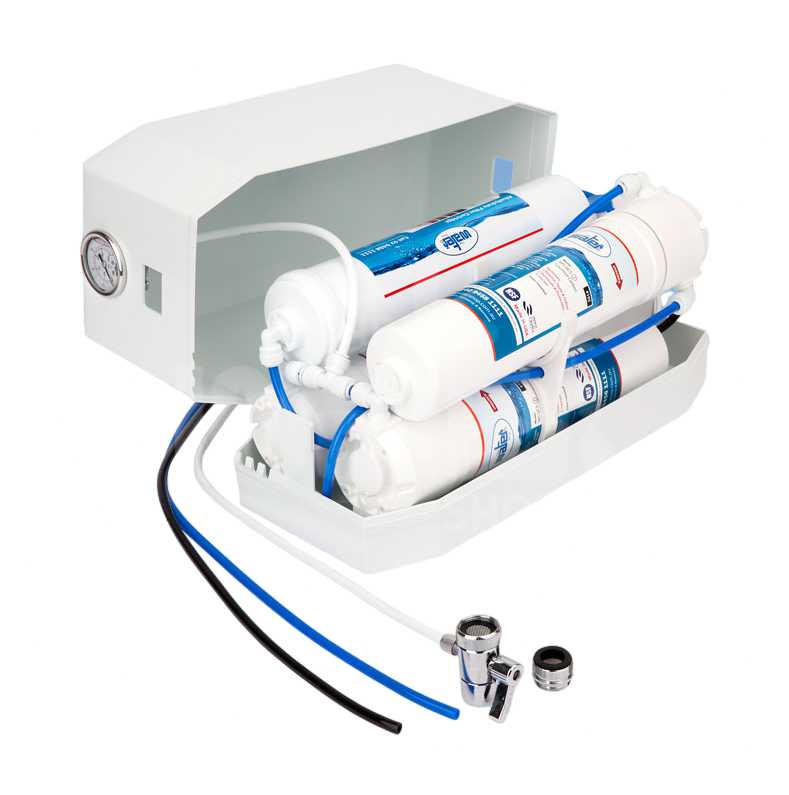
Reverse osmosis (RO) is a popular method of removing fluoride and other contaminants from drinking water. The process involves passing water through a semi-permeable membrane under high pressure, which separates the water from the dissolved solids and contaminants.
In the case of fluoride removal, the RO membrane has tiny pores that are smaller than the size of fluoride ions, so they cannot pass through the membrane. As a result, the fluoride is removed from the water, along with other contaminants such as arsenic, lead, and chlorine.
One of the advantages of using RO for fluoride removal is that it is highly effective, removing up to 95% of fluoride from water. It also has the added benefit of removing other impurities, resulting in clean, great-tasting water. RO systems can be installed under the sink, on the countertop, or at the point of entry to the home.
However, there are some downsides to using RO for fluoride removal. One major disadvantage is that the process wastes a significant amount of water, with up to 4 gallons of wastewater being produced for every gallon of purified water. Additionally, reverse osmosis filters can be expensive to install and maintain, and they require regular filter changes to ensure that the membrane remains effective.
Overall, RO is an effective and popular method of removing fluoride from drinking water, but it may not be the most cost-effective or practical solution for everyone. It is important to consider your individual needs and circumstances when choosing a method of fluoride removal.
Ion exchange
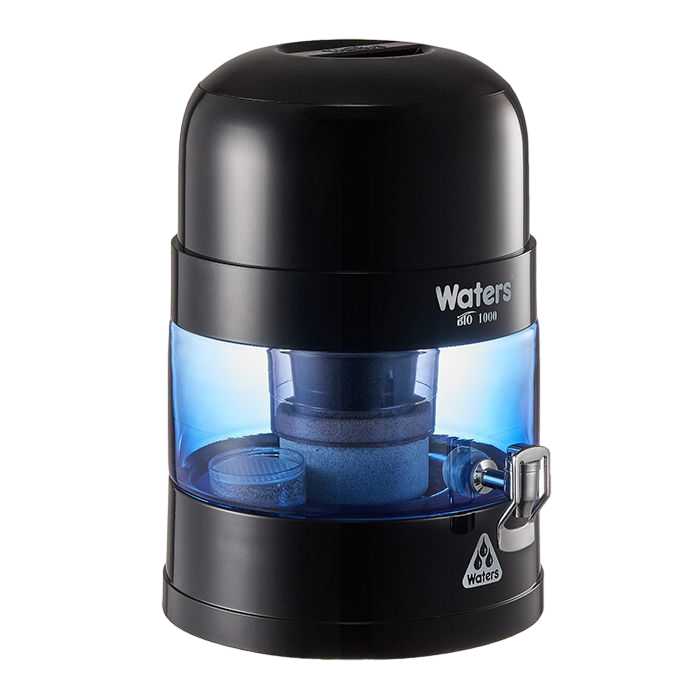
Ion exchange is another popular method of removing fluoride from drinking water. This process involves exchanging fluoride ions in the water with other ions, such as chloride or hydroxide ions, that are bound to a resin bed. As water passes through the resin bed, the fluoride ions are attracted to the resin and replaced with other ions, effectively removing the fluoride from the water.
One of the advantages of using ion exchange benchtop water filter for fluoride removal is that it is highly effective, removing up to 99.5% of fluoride from water. It is also a relatively simple process that can be incorporated into existing water treatment systems, such as a water softener. Ion exchange resin beds can be regenerated and reused, making them a more sustainable option than other methods that require filter replacements.
However, there are some limitations to using ion exchange for fluoride removal. One major disadvantage is that the process can be expensive to install and maintain, as it requires specialised equipment and trained professionals. Additionally, ion exchange resin beds can become saturated with fluoride over time and may need to be replaced or regenerated.
Overall, ion exchange in a benchtop gravity water filter is an effective method of removing fluoride from drinking water, but it may not be the most practical or cost-effective solution for everyone. It is important to consider your individual needs and circumstances when choosing a method of fluoride removal.
Activated alumina filters
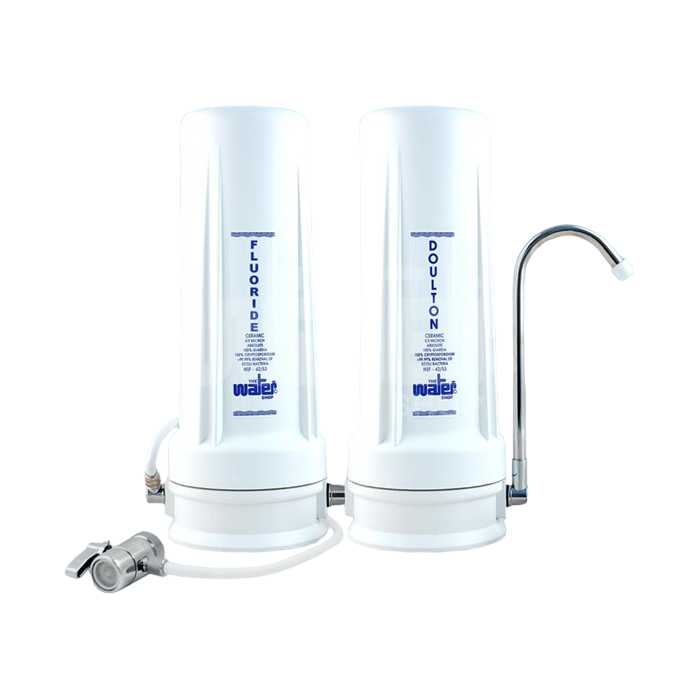
Activated alumina is a porous material made from aluminium oxide that is commonly used for fluoride removal in drinking water. When water passes through an activated alumina filter, the fluoride ions are attracted to the surface of the alumina particles and are adsorbed, effectively removing the fluoride from the water.
One of the advantages of using activated alumina filters for fluoride removal is that they are relatively inexpensive compared to other methods, such as reverse osmosis or distillation. They are also easy to install and maintain, requiring only periodic replacement of the filter cartridge.
However, there are some limitations to using activated alumina filters for fluoride removal. One major disadvantage is that they may not be as effective as other methods, removing only up to 80% of fluoride from water. Additionally, the filter may need to be replaced more frequently in areas with high levels of fluoride in the water.
Overall, activated alumina filters are a cost-effective and practical option for removing fluoride from drinking water, particularly in areas where fluoride levels are not excessively high. However, they may not be the most effective or sustainable solution for everyone, and it is important to consider your individual needs and circumstances when choosing a method of fluoride removal.
Bone char filters
Bone char is a porous material made from animal bones that has been heated to extreme temperatures. Bone char has been used for centuries as a natural filter for water. When water passes through a bone char filter, the fluoride ions are attracted to the surface of the bone char particles and are adsorbed, effectively removing the fluoride from the water.
One of the advantages of using bone char filters for fluoride removal is that they are a natural and sustainable option, as they are made from a waste product that would otherwise be discarded. They are also relatively inexpensive compared to other methods, such as reverse osmosis or distillation.
Overall, bone char filters are a natural and sustainable option for removing fluoride from drinking water, particularly in areas where fluoride levels are not excessively high. However, they may not be the most effective or practical solution for everyone, and it is important to consider your individual needs and circumstances when choosing a method of fluoride removal.
The potential negative effects of excessive fluoride
While fluoride is generally considered safe by our regulatory agencies, there are some potential negative health effects associated with excessive fluoride exposure.
- Dental fluorosis: This condition occurs when excess fluoride intake during tooth development causes changes in the appearance of tooth enamel, resulting in white spots, streaks, or brown stains on teeth. In severe cases, it can cause pitting and surface irregularities.
- Skeletal fluorosis: This is a rare condition that occurs when fluoride accumulates in the bones over time, leading to bone and joint pain, stiffness, and fractures. This condition is more common in areas with naturally high fluoride levels in water.
- Thyroid dysfunction: Some studies suggest that excess fluoride intake may disrupt thyroid function, leading to hypothyroidism, goitre, and other thyroid-related issues.
- Neurological effects: There is some evidence that high levels of fluoride exposure may impair cognitive function, particularly in children. Some studies have linked fluoride exposure to lower IQ scores, although the evidence is not conclusive.
Australian States & Territories Recommended Fluoride Levels in Drinking Water
| State/Territory | Recommended Fluoride Level (mg/L) |
|---|---|
| New South Wales | 1.0 |
| Victoria | 0.6 – 1.0 |
| Queensland | 0.6 – 0.8 |
| Western Australia | 0.7 – 1.0 |
| South Australia | 0.6 – 1.5 |
| Tasmania | 0.8 – 1.1 |
| Northern Territory | 0.6 – 0.9 |
| Australian Capital Territory | 0.8 – 1.0 |
It is important to note that these recommended fluoride levels may vary depending on factors such as climate, source water, and local health considerations. Water authorities and local governments may adjust these levels based on their specific needs and circumstances. It is also important to consult with a healthcare provider or dental professional to determine the appropriate level of fluoride intake for your individual needs.
US States Recommended Fluoride Levels in Drinking Water
| State | Recommended Fluoride Level (mg/L) |
|---|---|
| Alabama | 0.7 |
| Alaska | 0.7 |
| Arizona | 0.7 |
| Arkansas | 0.7 |
| California | 0.7 |
| Colorado | 0.7 |
| Connecticut | 0.8 |
| Delaware | 0.7 |
| Florida | 0.7 |
| Georgia | 0.7 |
| Hawaii | 0.7 |
| Idaho | 0.7 |
| Illinois | 0.9 |
| Indiana | 0.7 |
| Iowa | 0.7 |
| Kansas | 0.7 |
| Kentucky | 0.7 |
| Louisiana | 0.7 |
| Maine | 0.7 |
| Maryland | 0.7 |
| Massachusetts | 0.7 |
| Michigan | 0.7 |
| Minnesota | 0.7 |
| Mississippi | 0.7 |
| Missouri | 0.7 |
| Montana | 0.7 |
| Nebraska | 0.7 |
| Nevada | 0.7 |
| New Hampshire | 0.7 |
| New Jersey | 0.7 |
| New Mexico | 0.7 |
| New York | 0.7 |
| North Carolina | 0.7 |
| North Dakota | 0.7 |
| Ohio | 0.7 |
| Oklahoma | 0.7 |
| Oregon | 0.7 |
| Pennsylvania | 0.7 |
| Rhode Island | 0.7 |
| South Carolina | 0.7 |
| South Dakota | 0.7 |
| Tennessee | 0.7 |
| Texas | 0.7 |
| Utah | 0.7 |
| Vermont | 0.7 |
| Virginia | 0.7 |
| Washington | 0.7 |
| West Virginia | 0.7 |
| Wisconsin | 0.7 |
| Wyoming | 0.7 |

